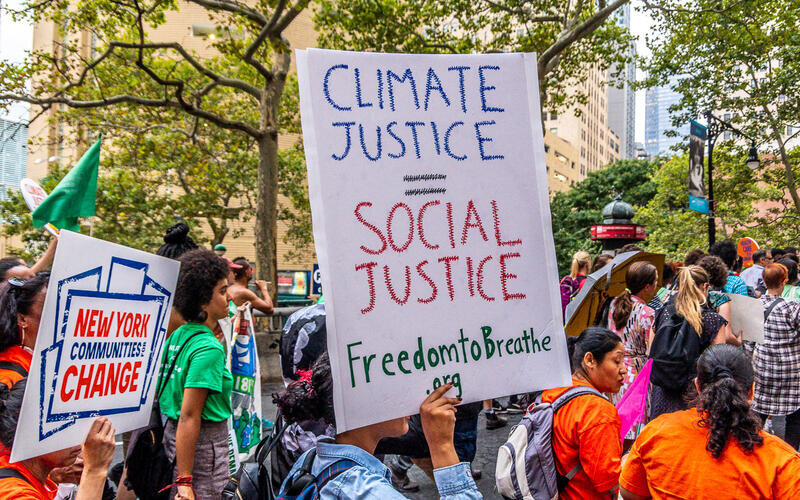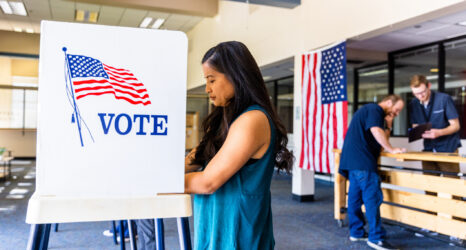A purely ecological agenda for Earth Day isn’t enough: Racial justice must be prioritized.

Earth Day occurs every year on April 22 and is a celebration of the modern environmental movement. An Earth Day challenge encourages the public to take their climate action to the next level. However, concern about the health of our planet must include concern for its people. Hate crimes against Asian Americans have increased by 339 percent, and 74 percent of Asian American and Pacific Islander (AAPI) women personally experience racism and/or discrimination. But environmental organizations have remained silent.
The Stop AAPI Hate movement is directly connected to the fight against systems of oppression like white supremacy that harm the environment. To achieve environmental justice, intersectional racial justice can’t be an add-on or an afterthought. A purely ecological agenda for Earth Day isn’t enough: Racial justice must be prioritized.
The attack on actress Karen Fukuhara, the beating of a woman in Yonkers, the deaths of two Asian American women in New York, and the anniversary of the Atlanta shootings, make it apparent that anti-Asian racism and misogyny are inseparable and are interconnected. As an Asian American woman and an environmental educator, the natural world always fascinated me but I’ve experienced racism, harassment and discrimination in the environmental space.
In second grade, I was sitting on the ground at recess intently looking for treasures to add to my prized rock and shell collection. A peer approached me and pulled back the corners of their eyes and said, “You’re really weird! It’s weird that you’re digging around in the dirt!” I felt like the air was knocked out of me and hot tears began to stream down my face. My joy for the environment immediately was taken, and I was told I didn’t belong.
From above, I could hear my classmates happily sliding down the slide, oblivious to my tears: I felt invisible. That same feeling returned when environmental organizations and environmentalists remained silent about the racism, hate crimes and violence experienced by AAPI women, despite the fact that Asian immigrant and Asian American communities care a lot about the environment and often consider themselves environmentalists.
Asian Americans and Asian immigrants have been crucial in advancing conceptions of the environment and in advancing community-based activist approaches to environmental justice. The Asian Pacific Environmental Network has been organizing and building power among Asian immigrant and refugee communities in the Bay Area since 1991. Chicago Asian Americans for Environmental Justice aims to provide an Asian American voice in the environmental justice movement.
White supremacy is not only the root of all race-based violence but it has also shaped the environmental movement and perceptions about conservation. It is an ideology promoting white people and the ideas, thoughts, beliefs and actions of white people as superior to those of people of color. The system of white supremacy also refers to interlocking systems and institutions: Political, economic, social, cultural, educational and more. In these systems, white people have more structural advantages, collectively and individually. White supremacy is ingrained in systems, including the environmental movement with prominent white male founders.
John James Audubon, the founder of The Audubon Society, was a slaveholder. John Muir, the founder of The Sierra Club, described Native American and Black people as “dirty, lazy and uncivilized.” When promoting National Parks in 1901, he assured prospective tourists that, “as to Indians, most of them are dead or civilized into useless innocence.”
Following the Green Movement’s racial reckoning in 2020, The Sierra Club acknowledged its historical role in perpetuating white supremacy. However, the larger issue extends beyond just environmental organizations and centers around how society views the environment.
Asian immigrant and Asian American communities care a lot about the environment and often consider themselves environmentalists. Asian Americans and Asian immigrants have been crucial in advancing conceptions of the environment and in advancing community-based activist approaches to environmental justice.
American environmentalism’s roots have long-standing prejudices against local communities and a focus on preserving the pristine wilderness and physical environment. This dominant narrative excludes the people who live on these lands, and local communities are often written out of popular conservation narratives. The environmental justice movement aimed to change that.
Working toward environmental justice began more than 30 years ago at the First National People of Color Leadership Summit, where a delegation drafted the 17 Principles of Environmental Justice and the Principles of Working Together. They significantly redefined the meaning of environment to be where people (particularly people of color), live, work, study, play and pray. This allowed for the inclusion of issues like toxic pollution, worker safety, transportation, housing and health. Racial justice and the environment aren’t mutually exclusive: They’re interconnected.
With the White House Council on Environmental Quality’s recent actions to remove race in favor of a “neutral” approach, racial justice efforts are also threatened. The dehumanization of Asian Americans and the racialized misogyny experienced by AAPI women are driven by white supremacy. Combating white supremacy and systemic racism is directly connected to achieving environmental justice. The mainstream environmental movement must prioritize racial justice and the safety of AAPI women beyond heritage months and obligatory check-boxes: Planetary success depends on it.
Up next:





